The ferns form an ancient lineage of plants, having appeared (according to the fossil record) some 360 million years ago, long before the flowering plants emerged. They have a more primitive form of reproduction than that of the flowering plants which is somewhat akin to that of fungi, in that it involves the production of spores rather than seeds. These spores are commonly produced in special structures that appear on the underside of regular leaves, but in a few species, they appear on fertile fronds which are often very different to the regular, sterile fronds. Ferns mostly occur in damp, wetland or woodland habitats, but some species also habitually grow from cracks in walls. Habitat and the arrangement of the spores as detailed above, are important aids to identification, as is very careful examination of the smaller sections of the leaves.
The main purpose of this page is to attempt to break this group up into bite-sized chunks, so that the pages you are led to do not get too big by containing a large number of species. At worst, if you follow a link from here and do not see your plant, return to this page and try another link.
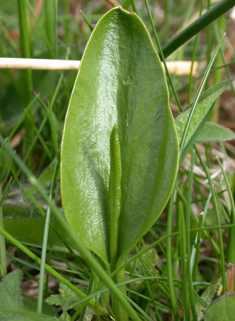 |
Adder's-tongues
Very small ferns, typically 10-20cm in height, that consist of a single, sterile frond and a single, fertile frond. The sterile frond consists of a single, oval or rounded leaf blade, while the fertile frond consists of a spear-like spike. Generally found in areas of short grass in old meadows, churchyards and similar, well-managed habitats. |
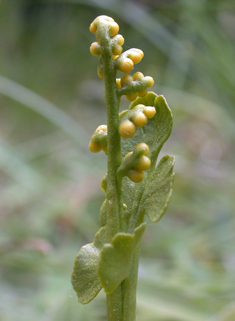 |
Moonwort
Very small ferns, typically 10-20cm in height, that consist of a single, sterile frond and a single, fertile frond. The sterile frond is deeply lobed, while the fertile frond is branched and carries the spores in bundles along the branches. Generally found in areas of short grass in old meadows, churchyards and similar, well-managed habitats. |
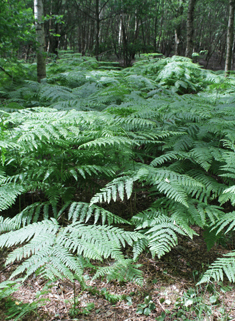 |
Bracken
Colonial ferns, forming extensive, almost impenetrable colonies of vegetation on heathland or in woodland on acidic soils. The leaves emerge singly from underground stems and spread evenly across open ground, they do not appear as discreet clumps or rosettes of leaves. Each upright leaf stalk branches distinctively into three. |
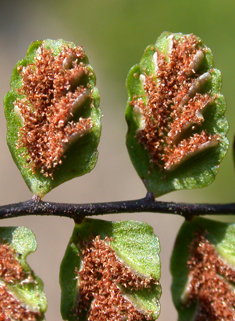 |
Spleenworts
These are mostly small species of ferns with a wide variety of leaf shapes. Many of them may be found growing from cracks in walls, but they may also be found on the ground in damp, shady places. A number of the species have spores forming large, dark areas that cover much of the underside of the leaf, or have spores in narrow lines, but not contained in regularly-spaced, rounded clusters. |
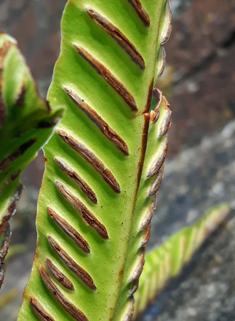 |
Spleenworts
These are mostly small species of ferns with a wide variety of leaf shapes. Many of them may be found growing from cracks in walls, but they may also be found on the ground in damp, shady places. A number of the species have spores forming large, dark areas that cover much of the underside of the leaf, or have spores in narrow lines, but not contained in regularly-spaced, rounded clusters. |
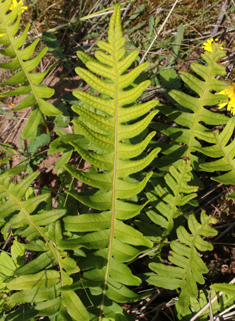 |
Polypodies & Hard Ferns
These ferns have rather simple leaves that are divided just once into a series of relatively narrow leaflets that give them a rather ladder-like look. Polypodies are very common in some areas, creeping along hedge bottoms and ditch banks to form extensive colonies. Hard Fern is much less common, being confined to acidic, heathy areas. It looks similar to the polypodies but has even narrower side lobes and doesn't form spreading mats. |
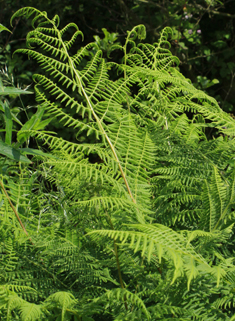 |
Lady Ferns, Buckler Ferns & Allies
Few woods or shady areas of any size are without at least one member of this group of large and familar ferns. These are plants of both wetlands and wooded areas and are largely characterised by the leaves forming a shuttlecock shape as they all emerge from a short, central hub, which is often well covered in brownish, papery scales. The leaves are often quite large (though can, of course, be small on young plants) and are usually twice-divided - the leaf being divided into a series of side branches which are themselves divided again into smaller, leafy segments. |
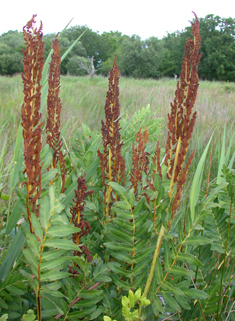 |
Royal Ferns
Large, stately ferns of wet fens and willow or alder carr, especially in Broadland. Sterile leaves grow up to two metres long, while the fertile, spore-bearing fronds appear later in the season as brownish, upright spikes, emerging from the centre of the plant. |
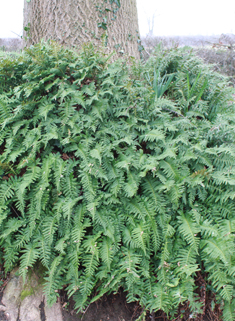 |
Spreading Ferns
While most ferns form distinctive clusters of leaves, the species in this group spread themselves out by means of rhizomes - hidden shoots that spread out below ground or just at the soil surface and send up individual leaves periodically along their length. The effect is to form spreading colonies of leaves that can grow over time to form often quite extensive patches of vegetation. |
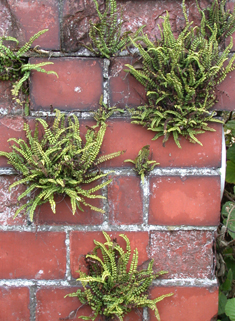 |
Ferns on walls
The majority of our native ferns in East Anglia are plants of shady or wet ground, but a few species that would typically grow in stony - even mountainous - country can be found in the region by looking on old stone walls. Churches and their churchyard boundary walls are classic places for these species, but old walls in most urban or suburban environments may hold ferns, while damp, secluded corners in stair wells and even in gratings or drains may hold small ferns. This section will help you to distinguish the species you may find in such places. |
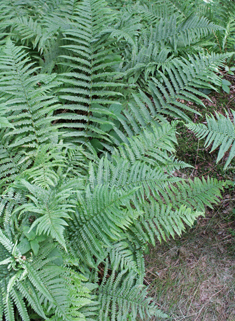 |
Woodland Ferns
Many of our larger ferns grow singly or in small colonies in shady area and woodland and this section will help you to identify the clump-forming species that grow in such places. As well as growing in shady locations, these ferns are typified by having leaves that arise in a rosette fashion from a short, central hub, which is often covered in papery scales. |
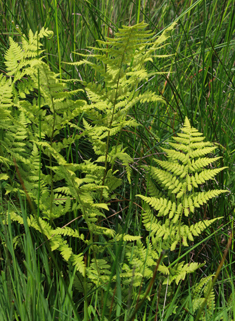 |
Wetland Ferns
Many of our ferns grow singly or in small colonies in damp meadows, reedbeds, fens and other wetland habitats and this section will help you to identify the clump-forming species that grow in such places. As well as growing in damp locations, these ferns are typified by having leaves that arise in a rosette fashion from a short, central hub, which is often covered in papery scales. |